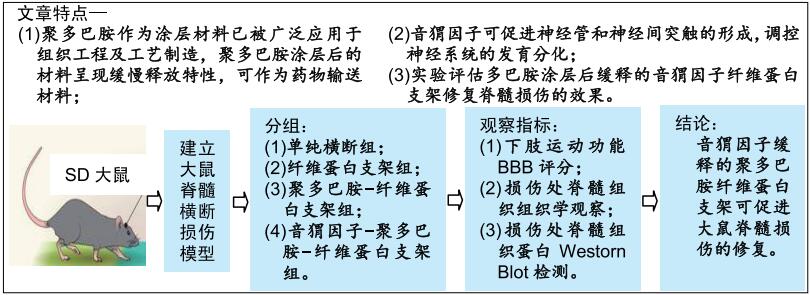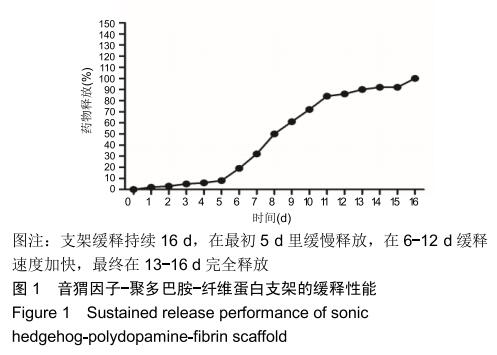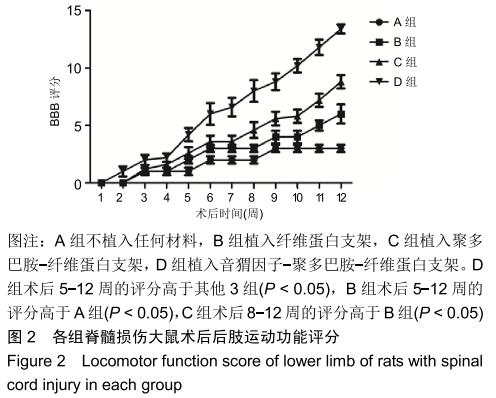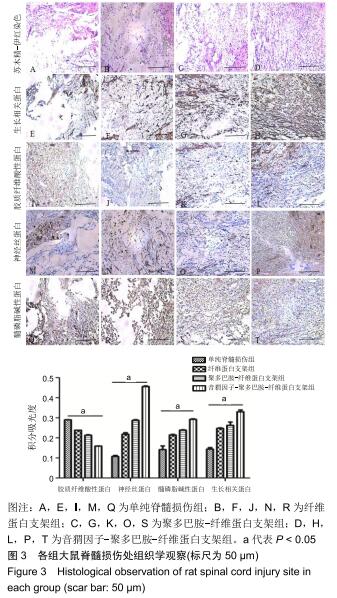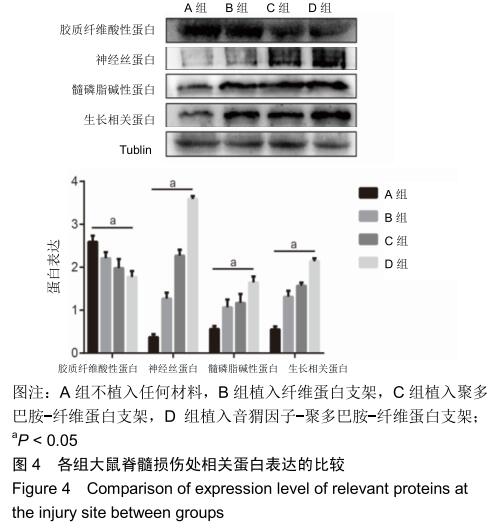|
[1] COUILLARD-DESPRES S, BIELER L, VOGL M. Pathophysiology of Traumatic Spinal Cord Injury. //Weidner N., Rupp R., Tansey K. (eds) Neurological Aspects of Spinal Cord Injury. Springer, Cham, 2017.
[2] SCHWAB ME, BARTHOLDI D. Degeneration and regeneration of axons in the lesioned spinal cord. Physiol Rev.1996;76(2): 319-370.
[3] ROWLAND JW, HAWRYLUK GW, KWON B, et al. Current status of acute spinal cord injury pathophysiology and emerging therapies: promise on the horizon.Neurosurg Focus. 2008; 25(5):E2.
[4] ORR MB, GENSEL JC. Interactions of primary insult biomechanics and secondary cascades in spinal cord injury: implications for therapy. Neural Regen Res.2017;12(10): 1618-1619.
[5] ROUANET C, REGES D, ROCHA E, et al. Traumatic spinal cord injury: current concepts and treatment update. Arq Neuropsiquiatr. 2017;75(6):387-393.
[6] SABELSTRÖM H, STENUDD M, FRISÉN J. Neural stem cells in the adult spinal cord.Exp Neurol. 2014;260:44-49.
[7] TUINSTRA HM, AVILES MO, SHIN S, et al. Multifunctional, multichannel bridges that deliver neurotrophin encoding lentivirus for regeneration following spinal cord injury.Biomaterials. 2012; 33(5):1618-1626.
[8] ASSINCK P, DUNCAN GJ, HILTON BJ, et al. Cell transplantation therapy for spinal cord injury.Nat Neurosci.2017;20(05):637-647.
[9] HAGGERTY AE, MALDONADO-LASUNCIÓN I, OUDEGA M. Biomaterials for revascularization and immunomodulation after spinal cord injury. Biomed Mater. 2018;13(4):044105.
[10] LIU S, XIE YY, WANG B. Role and prospects of regenerative biomaterials in the repair of spinal cord injury. Neural Regen Res. 2019;14(8):1352-1363.
[11] CHEDLY J, SOARES S, MONTEMBAULT A, et al. Physical chitosan microhydrogels as scaffolds for spinal cord injury restoration and axon regeneration.Biomaterials.2017;138:91-107.
[12] IWAYA K, MIZOI K, TESSLER A, et al. Neurotrophic agents in fibrin glue mediate adult dorsal root regeneration into spinal cord. Neurosurgery. 1999;44(3):589-596.
[13] KALSI P, THOM M, CHOI D. Histological effects of fibrin glue and synthetic tissue glues on the spinal cord: are they safe to use?. Br J Neurosurg. 2017;31(6):695-700.
[14] LUZZI S, CROVACE AM, LACITIGNOLA L, et al. Engraftment, neuroglial transdifferentiation and behavioral recovery after complete spinal cord transection in rats [published correction appears in Surg Neurol Int. 2018;9:77.
[15] LUND J, TOU S, DOLEMAN B, et al. Fibrin glue for pilonidal sinus disease. Cochrane Database Syst Rev. 2017;1(1):CD011923.
[16] GIACOMINI A, STAGNI F, TRAZZI S, et al. Inhibition of APP gamma-secretase restores Sonic Hedgehog signaling and neurogenesis in the Ts65Dn mouse model of Down syndrome. Neurobiol Dis.2015;82:385-396.
[17] ANTONELLI F, CASCIATI A, PAZZAGLIA S. Sonic hedgehog signaling controls dentate gyrus patterning and adult neurogenesis in the hippocampus. Neural Regen Res. 2019; 14(1):59-61.
[18] 李之朋,徐文彪,时君友.生物质仿贻贝粘附材料的研究进展[J].粘接, 2018(7):55-60.
[19] HOU S, CARSON DM, WU D, et al. Dopamine is produced in the rat spinal cord and regulates micturition reflex after spinal cord injury.Exp Neurol.2016;285(Pt B):136-146.
[20] JIANG W, LI M, HE F, et al. Targeting the NLRP3 inflammasome to attenuate spinal cord injury in mice. J Neuroinflammation. 2017;14(1):207.
[21] YUE JK, TSOLINAS RE, BURKE JF, et al. Vasopressor support in managing acute spinal cord injury: current knowledge. J Neurosurg Sci. 2019;63(3):308-317.
[22] KO MY, JANG EY, LEE JY, et al. The role of ventral tegmental area gamma-aminobutyric acid in chronic neuropathic pain after spinal cord injury in rats. J Neurotrauma.2018; 35(15):1755-1764.
[23] RYU JH, MESSERSMITH PB, LEE H. Polydopamine Surface Chemistry: A Decade of Discovery. ACS Appl Mater Interfaces. 2018;10(9):7523-7540.
[24] PALLADINO P, BETTAZZI F, SCARANO S. Polydopamine: surface coating, molecular imprinting, and electrochemistry- successful applications and future perspectives in (bio)analysis. Anal Bioanal Chem. 2019;411(19):4327-4338.
[25] YU B, WANG DA, YE Q, et al. Robust polydopamine nano/microcapsules and their loading and release behavior. Chem Commun (Camb). 2009;(44):6789-6791.
[26] 杨文静,沈元昊,杨开元,等.定向多通道纤维蛋白支架对EMSCs迁移分化的影响[J].神经解剖学杂志,2018,34(6):658-664.
[27] 崔学文,张竞新,许艺荠,等.SHH缓释纤维蛋白支架移植促大鼠脊髓损伤的修复[J].神经解剖学杂志,2017,33(2):131-137.
[28] JUNG SY, SEO TB, KIM DY. Treadmill exercise facilitates recovery of locomotor function through axonal regeneration following spinal cord injury in rats. J Exerc Rehabil. 2016;12(4): 284-292.
[29] 徐向东,卢向红,施勇,等.纤维蛋白胶顺铂凝胶化疗的缓释特性[J].中华医学杂志,2011,91(18):1246-1249.
[30] LIU Q, YU B, YE W, et al. Highly selective uptake and release of charged molecules by pH-responsive polydopamine microcapsules. Macromol Biosci. 2011;11(9):1227-1234.
[31] YANG K, LEE JS, KIM J, et al. Polydopamine-mediated surface modification of scaffold materials for human neural stem cell engineering [published correction appears in Biomaterials. 2012 Nov;33(32):8186-7]. Biomaterials. 2012;33(29):6952-6964.
[32] BARNABÉ-HEIDER F, FRISÉN J. Stem cells for spinal cord repair. Cell Stem Cell. 2008;3(1):16-24.
[33] STEWARD O, SHARP KG, YEE KM, et al. Characterization of ectopic colonies that form in widespread areas of the nervous system with neural stem cell transplants into the site of a severe spinal cord injury. J Neurosci. 2014;34(42):14013-14021.
[34] WANG T, LI B, YUAN X, et al. MiR-20a Plays a Key Regulatory Role in the Repair of Spinal Cord Dorsal Column Lesion via PDZ-RhoGEF/RhoA/GAP43 Axis in Rat. Cell Mol Neurobiol. 2019;39(1):87-98.
[35] UGBODE CI, SMITH I, WHALLEY BJ, et al. Sonic hedgehog signalling mediates astrocyte crosstalk with neurons to confer neuroprotection. J Neurochem. 2017;142(3):429-443.
[36] SAADE M, GONZALEZ-GOBARTT E, ESCALONA R, et al. Shh-mediated centrosomal recruitment of PKA promotes symmetric proliferative neuroepithelial cell division [published online ahead of print, 2017 Apr 27]. Nat Cell Biol. 2017;19(5): 493-503.
[37] FARRENY MA, AGIUS E, BEL-VIALAR S, et al. FGF signaling controls Shh-dependent oligodendroglial fate specification in the ventral spinal cord. Neural Dev. 2018;13(1):3.
[38] ZHENG B, YE L, ZHOU Y, et al. Epidermal growth factor attenuates blood-spinal cord barrier disruption via PI3K/Akt/Rac1 pathway after acute spinal cord injury. J Cell Mol Med. 2016;20(6): 1062-1075.
[39] XIA T, HUANG B, NI S, et al. The combination of db-cAMP and ChABC with poly(propylene carbonate) microfibers promote axonal regenerative sprouting and functional recovery after spinal cord hemisection injury. Biomed Pharmacother. 2017;86:354-362.
[40] GUO WL, QI ZP, YU L, et al. Melatonin combined with chondroitin sulfate ABC promotes nerve regeneration after root-avulsion brachial plexus injury. Neural Regen Res. 2019;14(2):328-338.
|
